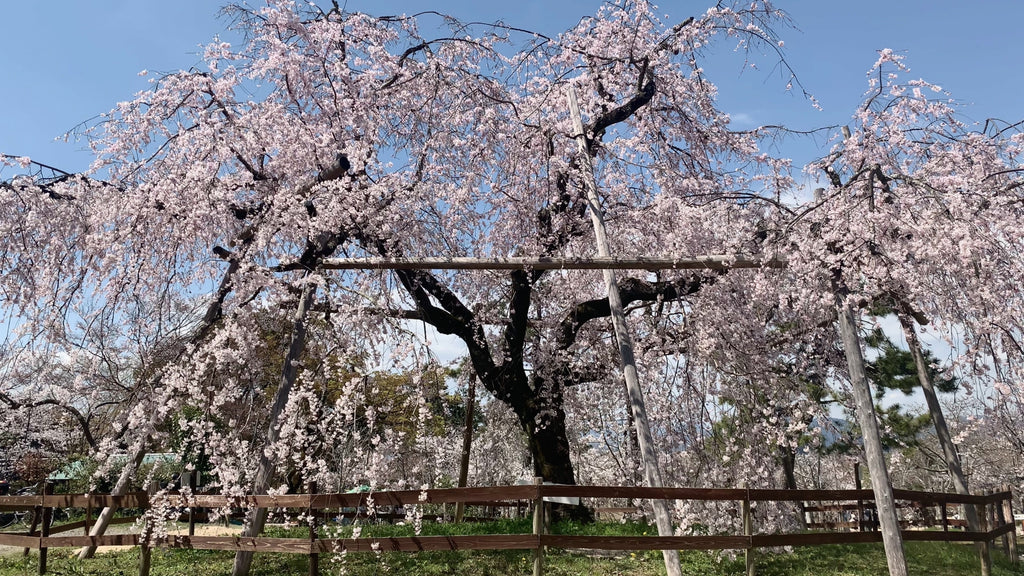April is a month of "Uzuki" in Japan. Among various theories as to the origin of the name, the prevailing theory is that it is the season when "U no Hana" (deutzia crenata) bloom. Another theory is that it is "Uetsuki," as it is a month for planting (ueru in Japanese) rice seedlings, the staple food of the Japanese people.
In Japan, the traditional event in April is cherry blossom, or "Sakura", viewing called "Hanami". This article introduces the relationship between Japan and cherry blossoms as well as the five famous spots worth visiting in lifetime.
Spring in Japan always accompanied by cherry blossoms
Hanami is a Japanese custom to celebrate the arrival of spring since ancient times.
Hanami was initiated by aristocrats in the Nara period (710-784), and was originally a way to appreciate plum blossoms, which were introduced from China. Cherry trees were originally regarded as sacred trees where the god of rice cultivation resided, and were objects to be worshipped rather than appreciated.
It was not until 812 (Konin 3) that cherry blossoms became the most popular flower in Japan. Emperor Saga held a hanami banquet with the view of cherry blossoms, and it became the mainstream.
Eventually, hanami became popular among samurai and townspeople as well. Samurai warriors, in particular, were attracted to the beauty of cherry blossoms as they projected their own views of life and death onto the graceful beauty of the falling blossoms.

Five best hanami spots worth visiting in lifetime
In simple terms, hanami is like a picnic in Japan. While simply gazing at cherry blossoms is fine, it is also fun to gather with your loved ones and dine under the cherry trees in full bloom. At hanami spots, food stalls line the streets, where you can buy freshly prepared food.
Some hanami spots are lit up at night. Cherry blossoms illuminated by lights are also fantastic and beautiful. You will be able to enjoy a more Japanese emotional scenery.
Here are some popular hanami spots for foreginers. They are also famous as regular sightseeing spots, so it is worth visiting even if it is not in the hanami season.
Shinjuku Gyoen (Tokyo)
A 10-minute walk from JR Shinjuku Station, this sprawling 58.3-hectare garden is a must-see. It is an oasis in the metropolis, and in spring, approximately 1,000 cherry trees of about 65 varieties are in full bloom. The competition between the skyscrapers and cherry blossoms in full bloom can only be seen in the heart of the city. There is a wide variety of cherry trees, and each variety has a different blooming season, so visitors can enjoy hanami viewing for a long period of time.

Ueno Onshi Park (Tokyo)
Ueno Onshi Park boasts a long history and has been a popular hanami spot since the Edo period. Approximately 800 cherry trees, mostly Someiyoshino, are planted here, and the rows of cherry trees in full bloom are a sight to behold. At night, the park is illuminated by Bonbori lanterns, creating a romantic atmosphere.

Mt. Yoshino (Nara)
Mt. Yoshino is a World Heritage site and attracts tourists from all over the world. The sight of 3 million cherry trees of about 200 varieties, mostly white yamazakura, covering the entire mountain is breathtaking. It is also called "Hitome Senbon," meaning "the splendor of seeing a thousand sakura trees at a glance.

Maruyama Park (Kyoto Prefecture)
The oldest park in Kyoto City, it is known as one of the best hanami spots in Kyoto. About 800 cherry trees, including someiyoshino and yamazakura, bloom in the park, which attracts many hanami visitors every year. The Gion Shidare-zakura (weeping sakura tree) in the center of the park is a symbol of the park and is popular for its graceful and ethereal appearance.

Kenrokuen (Ishikawa Prefecture)
Kenrokuen, one of the three most famous gardens in Japan, is also famous for its cherry blossoms. In spring, 420 cherry trees of about 40 varieties bloom one after another. Among them, the Kenrokuen kiku-zakura, a rare variety that is at its best in late April, and the Kenrokuen kumagai-zakura, a precious 300-year-old cherry tree, are must-sees.

Stories related to the four seasons
- January, A Harmonious Family Moment
- February, Demons Out! Fortune In!
- March, Hina Festival for Girls
- April, Cherry blossoms in full bloom
- May, Carp streamers swimming in the sky
- June, Rain falls when plum fruits are ripening
- July, Lovers Meeting across the Milky way on Tanabata
- August, Obon to welcome ancestors back home
- September, Can you see the moon rabbit?
- October, When 8 million deities gather at Izumo Taisha
- November, Shichi-Go-San Festival to celebrate kids' growth
- December, Japanese way of spending Christmas

